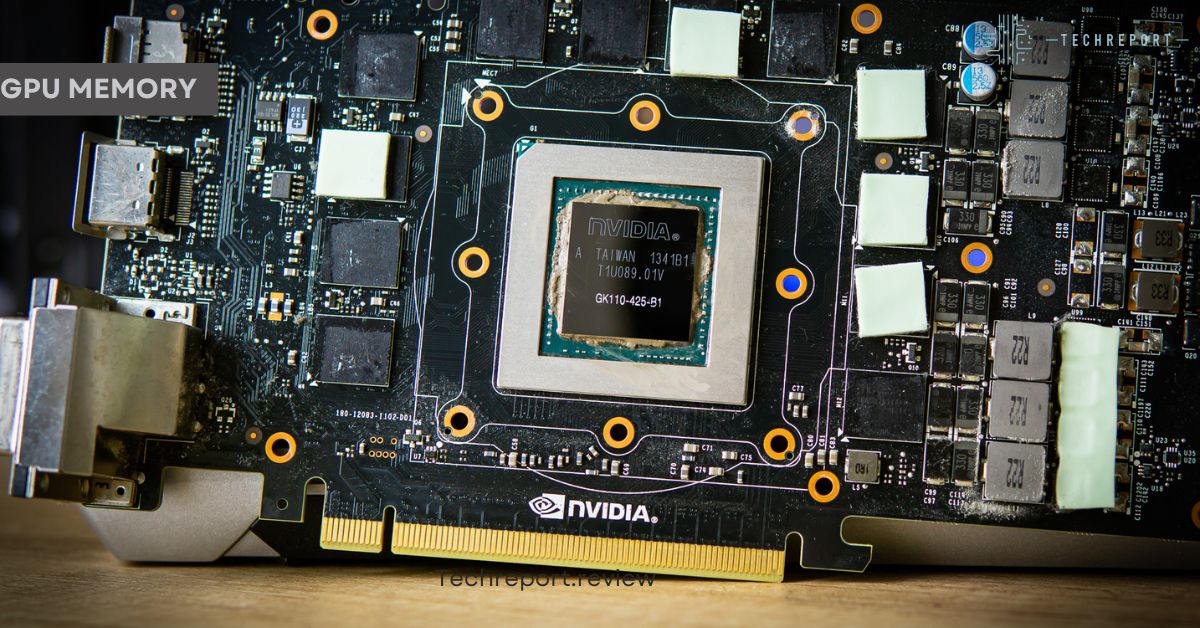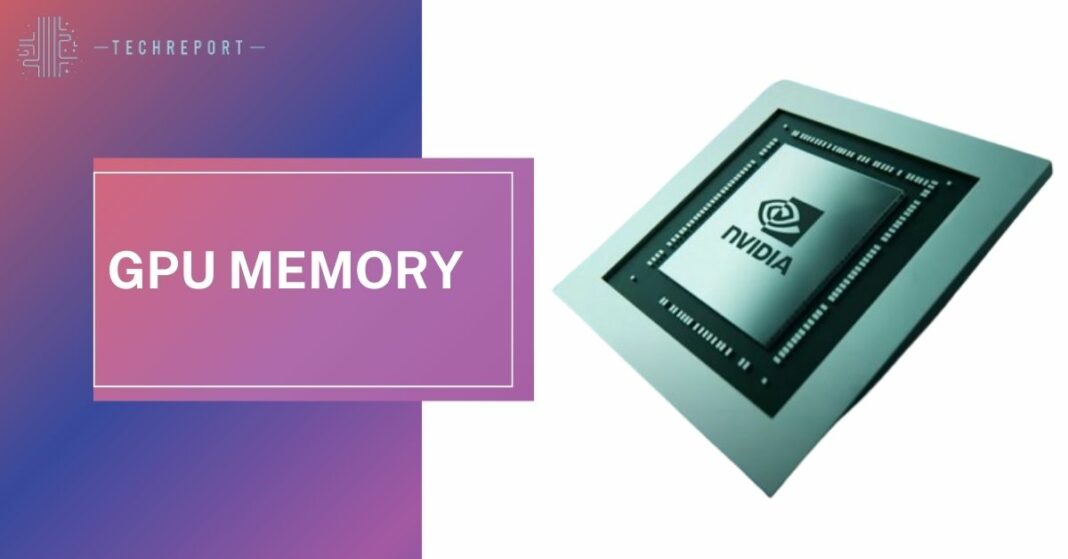Welcome to the tech realm, where GPUs flex their memory muscles to make your digital experiences smoother than a buttered lightning bolt. In the grand spectacle of modern computing, GPU memory takes center stage, performing feats that would make even the most seasoned computer wizards nod in approval.
Why does it matter, you ask? Well, imagine your computer is a superhero, and GPU memory is its secret power source. Without it, your hero would be stuck playing Minesweeper while the world moves on to the latest high-res cat videos.
Now, hold on to your hats because GPU technology is on a cosmic rollercoaster of advancement. It’s evolving faster than your grandma’s phone, and she just upgraded from a rotary dial. As we dive into the intricacies of GPU memory, prepare to be amazed at how these humble memory modules are the unsung heroes behind your mesmerizing graphics and fluid multitasking. Ready for the GPU memory magic show? Let’s roll!
Also Read: Digital Privacy Value
Basics of GPU Memory

Alright, buckle up, because we’re about to dive into the thrilling world of GPU memory. But hold your technobabble dictionaries; we’re keeping it as simple as explaining the brilliance of a peanut butter and jelly sandwich.
What’s GPU Memory, Anyway?
GPU memory, or the brain’s secret stash, is where your graphics card keeps all the important stuff. It’s like a backpack for your GPU, but instead of snacks and questionable doodles, it holds data for your computer’s visual magic.
Types of GPU Memory: The Memory Buffet
Ever heard of GDDR, HBM, and other alphabet soups? These are the different flavors of GPU memory, each with its own unique charm. It’s like choosing between vanilla and chocolate, but with a tech twist.
GPU Memory’s Star Role in Gaming
Now, why does GPU memory matter? Well, imagine playing your favorite game without it – it’s like trying to enjoy a blockbuster movie with a blindfold. GPU memory ensures your gaming visuals are as sharp as your wit, handling the heavy lifting in graphic-intensive tasks.
In a nutshell, GPU memory is the unsung hero in your computer’s blockbuster performance, ensuring that your gaming adventures and graphic endeavors are nothing short of spectacular. Ready to move on to the next act? Let’s roll!
Types of GPU Memory
Welcome, brave souls, to the GPU Memory Circus, where we unravel the dazzling acts of GDDR5, GDDR6, HBM, and their merry band. Hold tight; this is not your typical circus with clowns but a tech extravaganza!
GDDR5: The Wise Old Wizard
Meet GDDR5, the Gandalf of GPU memory. It’s been around, seen a few things, and still packs a punch. With its reliable speed, it’s like having a wise old wizard in your GPU, casting spells to make your games run smoother.
GDDR6: The Speedster on Steroids
Now, enter GDDR6, the Flash of the GPU world. It’s all about speed, baby! Faster data transfers mean your graphics load quicker than a cat meme on the internet.
HBM: The Zen Master
HBM, or High Bandwidth Memory, is the Zen master in the GPU monastery. It keeps things peaceful and efficient, making sure your GPU doesn’t break a sweat even during intense gaming sessions.
Advantages:
- GDDR5’s affordability makes it the people’s champion, providing decent performance without burning a hole in your virtual pocket.
- GDDR6, the speed demon, ensures your games run smoother than a buttered-up slide.
Disadvantages:
- GDDR5, though reliable, might struggle with the latest graphics demands, like your grandpa trying to figure out Snapchat.
- GDDR6, in all its speedy glory, can be a bit of a show-off. Expect it to demand a bit more moolah.
How the Types Steal the Show in Gaming and Beyond
- GDDR5 keeps the budget gamers happy, offering a decent experience without requiring a bank loan.
- GDDR6 steps up the game for those who demand speed and don’t mind flaunting it in their GPU budget.
As the curtain falls on this GPU memory spectacle, remember that each type brings its unique flair to the performance stage. Next up, let’s see how these memory maestros perform in the real world of gaming and professional tasks. Ready for the grand finale? Onward we go!
Also Read: Reboot Samsung TV Guide
GPU Memory Capacities
Welcome to the Memory Buffet, where GPU memory capacities are laid out like options in a cafeteria. But unlike choosing between salads and burgers, here, size does matter. Let’s dig into the feast!
Memory Capacities 101: The ABCs of Gigabytes
GPU memory capacities come in all shapes and sizes – 2GB, 4GB, 8GB, and beyond. It’s like choosing between a snack, a meal, or an all-you-can-eat buffet. But before you start piling on the virtual plates, let’s understand why size is a big deal.
The Significance of Capacity: It’s Not Just for Show
The memory capacity is like the storage space in your garage. The more you have, the more stuff (data) you can store. For GPU memory, this means smoother gameplay, better multitasking, and an overall swifter computing experience.
Choosing the Right Size: It’s Like Shopping for Shoes
Picking the right GPU memory capacity is a bit like shopping for shoes. You wouldn’t wear clown shoes to a marathon or Cinderella slippers to a construction site. Similarly, your GPU memory needs to fit the task at hand.
Choosing for Different Use Cases: A Match Made in Tech Heaven
For Casual Strollers (2GB-4GB): If you’re taking a leisurely stroll through everyday computing tasks, like checking emails or watching cat videos, a 2GB to 4GB GPU memory will do the job.
For Multitasking Maestros (8GB-16GB): If you’re the master of multitasking, juggling spreadsheets, Photoshop, and a dozen browser tabs, aim for an 8GB to 16GB GPU memory for a seamless experience.
For Gaming Gladiators (16GB and Beyond): If you’re entering the arena of high-end gaming, where graphics are as critical as your strategic skills, go big with 16GB and beyond for a front-row seat to gaming glory.
As you navigate the buffet of GPU memory capacities, remember to choose the size that fits your digital appetite. It’s not just about impressing your virtual neighbors; it’s about making your computing life a breeze. Ready for the next course? Let’s keep this memory feast rolling!
Impact on Gaming Performance
Welcome to the gaming arena, where GPU memory and performance are the lead actors in a blockbuster movie. Let’s unravel the plot and see how this dynamic duo influences the gaming spectacle.
The Love Story of GPU Memory and Gaming Performance
Think of GPU memory as the superhero cape in the gaming world. It’s not just for show; it has a crucial role in ensuring your gaming experience is as smooth as a buttered-up slip ‘n’ slide. How? Let’s spill the pixels.
The Influence Game: GPU Memory Takes the Stage
GPU memory is like the director shouting “action” behind the scenes. It ensures your game characters move seamlessly, graphics render with the finesse of a ballet dancer, and your overall gaming performance doesn’t hit awkward pauses like a badly edited movie.
Popular Game #1: “Fortnite”
In the world of “Fortnite,” where every second counts, GPU memory is the unsung hero. A 4GB GPU memory is like having a reliable sidekick, ensuring you don’t lag behind in the quest for victory.
Popular Game #2: “Cyberpunk 2077”
Enter the cybernetic realm of “Cyberpunk 2077,” and suddenly, GPU memory becomes your cyber-ally. Here, an 8GB or higher GPU memory ensures you can enjoy the futuristic chaos without your system having a meltdown.
Popular Game #3: “League of Legends”
In the fast-paced world of “League of Legends,” where strategy and quick reflexes are key, a 2GB to 4GB GPU memory is like having the perfect gaming coffee – enough to keep you alert, responsive, and ready for the next move.
In this gaming love story, GPU memory and performance dance together, creating the magic that makes your gaming adventures unforgettable. As we wrap up this act, remember, the right GPU memory is not just a sidekick; it’s the co-star in your gaming blockbuster. Ready for the final scene? Let’s cue the credits!
Also Read: How to Rotate Screen Chromebook
Future Trends in GPU Memory
Welcome to the crystal ball gazing, where we peek into the future of GPU memory. Spoiler alert: it’s not your typical fortune-telling session; it’s more like predicting the next blockbuster in the world of graphics processing.
Into the Future: GPU Memory’s Evolution
Picture this: GPU memory evolving like a Pokémon, but without the battle scars. The future holds promises of faster, smarter, and more efficient memory technologies. It’s like upgrading from a flip phone to a spaceship; your graphics will be out of this world.
The Sneak Peek: Upcoming Advancements
In the labs of tech wizards, advancements are brewing. Expect faster data transfers, lower power consumption (goodbye, electricity bills), and maybe even memory that can predict your next gaming move. Yes, the future is that exciting.
Graphics Wonderland #1: Immersive Virtual Reality
Imagine VR experiences so real you’ll need a virtual towel. Future GPU memory advancements will play a starring role in crafting immersive virtual reality, where you won’t just play the game; you’ll be in it.
Graphics Wonderland #2: 8K Gaming and Beyond
Brace yourself for a visual feast – 8K gaming and beyond. Future GPU memory will pave the way for graphics so sharp, you might mistake your game for reality. Just be ready to marvel at the details; your characters will have better skin than you.
Graphics Wonderland #3: AI-powered Graphics Magic
AI is the magician, and GPU memory is the wand. The future might see AI-powered graphics rendering that anticipates your gaming desires. It’s like having a personal graphics genie; rub the GPU, and your gaming wishes come true.
In this journey to the future, GPU memory is not just keeping up; it’s leading the graphics revolution. So, hold onto your graphics cards; the future is about to get visually stunning. As we wrap up this futuristic ride, remember, the best is yet to come. Ready to leap into the graphics wonderland? Let’s fasten those seatbelts!
In Crux
Alright, party people, it’s time to wrap up this GPU memory fiesta. Let’s take a stroll down memory lane (pun intended) and highlight the key takeaways from our tech adventure.
From the basics of GPU memory to the future wonders it holds, we’ve covered it all. GPU memory isn’t just a backstage crew member; it’s the lead actor, shaping your gaming, multitasking, and graphics experiences.
Memory capacities ranging from 2GB to infinity (okay, not infinity, but you get the drift) offer options galore. Choosing the right size is like finding the perfect pair of shoes – it should fit your digital lifestyle like a glove.
In the gaming arena, GPU memory isn’t a silent observer; it’s the scriptwriter, ensuring your gaming story unfolds without hiccups. Choose wisely, and your gaming experience will be smoother than a buttered pancake.
Hold onto your graphics cards; the future promises VR wonders, 8K gaming, and AI-powered graphics magic. GPU memory is gearing up to be the superhero in this graphics wonderland.
As we bid adieu to this memory-infused journey, here’s a friendly nudge: when picking a GPU, don’t just toss a coin and hope for the best. Use the insights gained here to make informed decisions. Your GPU isn’t just a gadget; it’s your digital companion on this tech rollercoaster.
So, dear reader, as you embark on your GPU quest, armed with newfound wisdom, may your graphics be ever stunning, your gaming lag-free, and your tech decisions as savvy as a cat wearing sunglasses. Happy GPU hunting, and may your memory be as sharp as your graphics! Until next time, tech enthusiasts!
How much did you like Our Detailed Unveiling the Secrets: GPU Memory Unraveled”? Review Also, please share these Blogs with your friends on social media.
Related Blogs
- Is iPhone 14 Worth the Hype
- Unblock Banned Apps
- Best Cheap VPN Services
- Curved or Flat: Which TV Should You Buy?
FAQs about GPU Memory
What GPU memory capacity do I need for gaming?
Choosing GPU memory is like finding the right shoes for different occasions. For casual tasks, 2GB to 4GB is a stroll in the park. If you're a multitasking maestro, aim for 8GB to 16GB, and for gaming gladiators entering the high-res arena, 16GB and beyond is your golden ticket to gaming glory.
What advancements can we expect in future GPU memory?
The crystal ball reveals a future where GPU memory evolves faster than a tech startup. We're talking faster data transfers, lower power consumption, and memory that might predict your next gaming move. VR experiences, 8K gaming, and AI-powered graphics magic are on the horizon, making your gaming future visually stunning.
How does GDDR5, GDDR6, and HBM differ in GPU memory types?
GDDR5 is the wise old wizard, reliable and budget-friendly. GDDR6 is the speedster, offering faster data transfers for a smoother gaming experience. HBM is the Zen master, keeping things peaceful and efficient. Each type has its unique charm, ensuring there's a GPU memory flavor for every tech palate.
Why should I care about GPU memory capacities in everyday computing?
GPU memory is not just for gamers; it's your digital companion in everyday computing. Whether you're streaming videos, editing photos, or browsing a gazillion cat memes, the right GPU memory ensures your computer doesn't stumble like a clumsy sidekick. It's about making your digital life a breeze, one memory byte at a time.




























